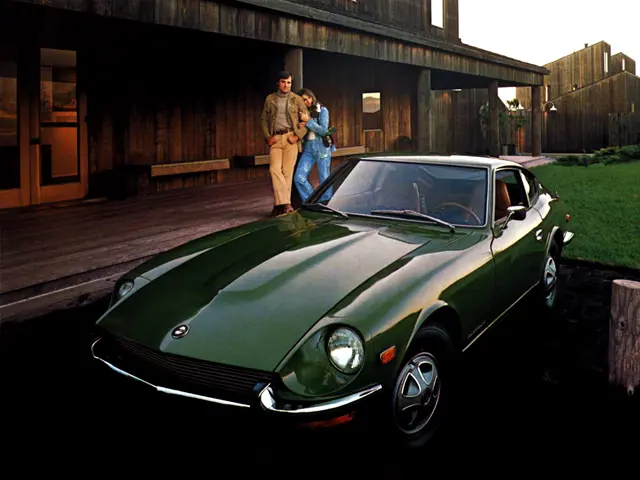THE DATSUN 240Z – A CELEBRATION
08 March 2023
The year is 1970, and there is no shortage of distractions at the London Motor Show. Visitors had the chance to appreciate the Triumph Stag, the Ford Cortina Mk. III, the Vauxhall Viva HC – and an incredibly handsome Japanese coupe. Nissan had been selling its products in the UK under the Datsun brand for the past two years. However, nothing prepared visitors for the sight of that 240Z. Here was a vehicle which seemed to combine the appeal of a Jaguar E-Type with an Austin-Healey 3000.
Nissan’s first post-war sports car was the 1959 S211. By the following year, the 1.2-litre SPL212 Fairlady was available in the USA; the name derived from the famous stage musical My Fair Lady. The company also introduced the Cedric saloon in 1960 and the local female sales team for the SPL212 were actually known as ‘Miss Fairladies’.

The SP310 series introduced in 1961 popularised the company’s open two-seaters. However, by the mid-1960s, Yutaka Katayama, the president of Nissan Motor Corporation USA, saw the need for a successor within the financial reach of a driver in the MG/Sunbeam/Triumph income bracket.
The new sporting Nissan would be a grand tourer that could be used daily by a middle-class commuter, as opposed to a second car for the weekends at the country club. Finally, it needed to be a hardtop, following various complaints from American Fairlady owners regarding the hood’s inability to keep out the rain.
The resulting Z Coupe made its bow on the 22 October 1969. Nissan offered domestic buyers the Datsun Fairlady Z with a 2.0-litre SOHC six-cylinder or the more powerful DOHC 2.0-litre S20 unit, also used by the Skyline 2000 GT-R. The export 240Z featured a 2,394-cc six-cylinder SOHC plant with twin Hitachi carburettors. The company planned to use the ‘Fairlady’ brand in the USA but, as the story goes, Mr. Katayama had other ideas. He reputedly tore the nameplate off every vehicle in the first shipment that arrived at California.
The advertisements claimed the Z was “no ordinary GT”, as the Datsun combined stunning looks with a top speed of 125 mph. Road & Track noted, “The basic list price of the 240Z is $3,526 and at this price it is a super-bargain, with a combination of styling, performance and handling far ahead of anything else under $4000”. Such a report must have caused some concern in British Leyland as the new Datsun cost only $200 more than the MGB.
Across the Atlantic, Datsun GB sold a mere two examples in 1970, but a Motor Sport test was probably ill-received at Abingdon. The writer thought the 240Z would “appeal to an MGB GT owner who possibly wishes to spend a little more money for added performance and prestige”. In addition, “The Datsun 240Z is what the MGC GT should have been and wasn’t and it seems a great shame that the British industry cannot offer a similar type of vehicle”.
When the 260Z superseded the 240Z in 1973, US sales amounted to 148,115 units out of a 168,584 production run. And each embodied Katayama’s philosophy - “we’re not selling empty bodies called cars. Rather, we sell ‘driving performance’ or ‘a driving experience’”. Absolutely.
